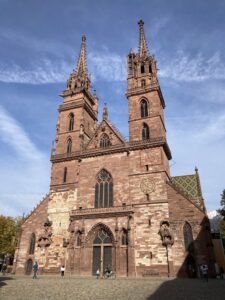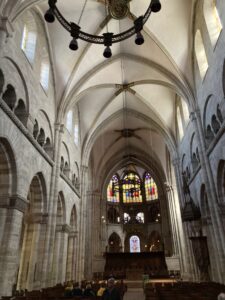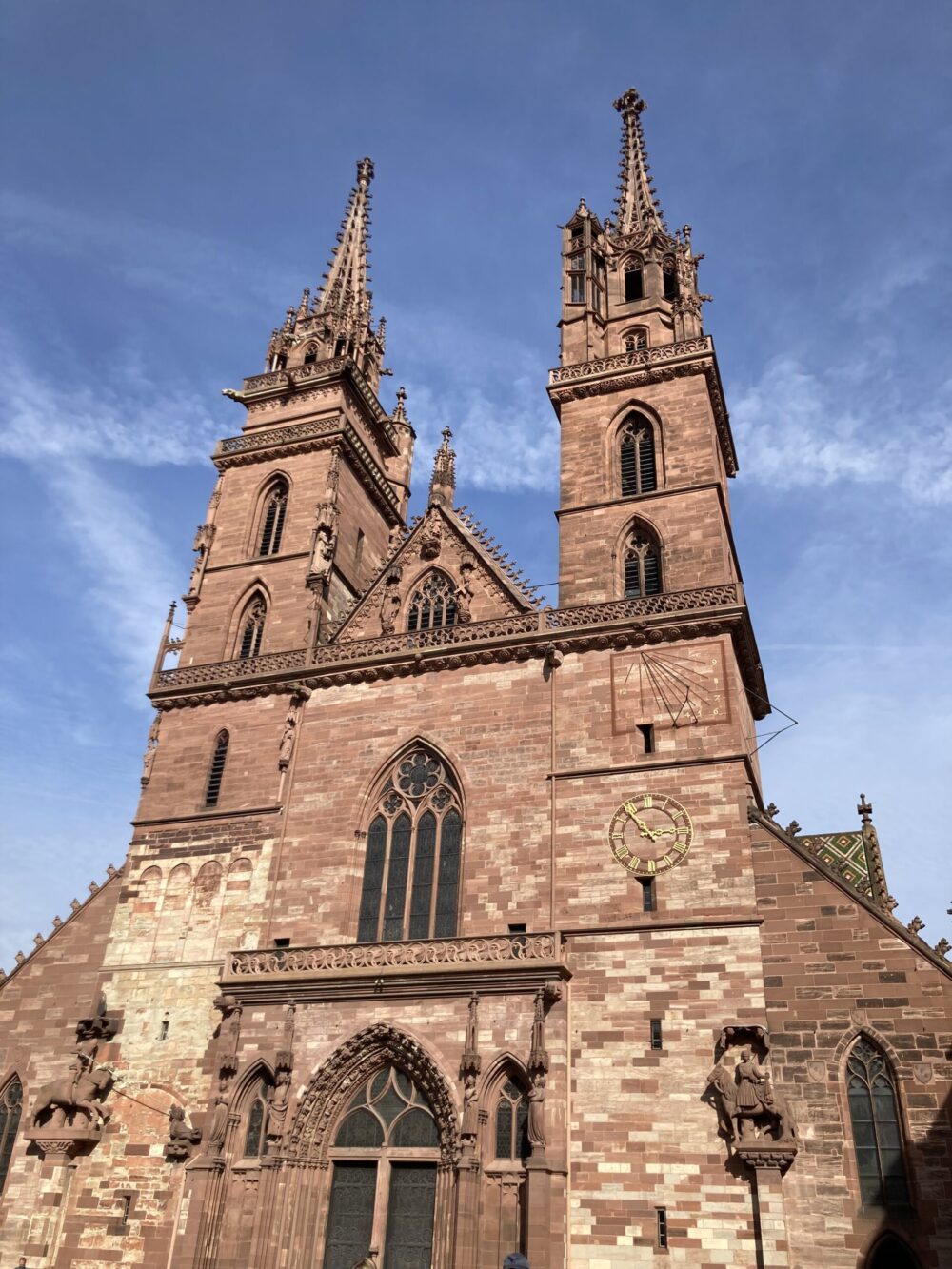Country: Switzerland
City: Basel
Location: https://maps.app.goo.gl/E4YrBFZdYAUq3ywB6
The Basel Minster, also known as the Basel Cathedral or Basel Münster, is a prominent religious and architectural landmark in Basel, Switzerland. Its history is rich and spans over several centuries, reflecting the cultural, religious, and architectural developments of the region.

The construction of the Basel Minster began in the late Romanesque period in 1019, under the episcopacy of Heinrich von Thun. The initial building was a simple three-aisled basilica, and over the following centuries, it underwent various transformations, influenced by prevailing architectural styles. In the 12th century, the cathedral acquired elements of the Gothic style, and by the 14th century, it took on its characteristic Gothic appearance, with soaring pointed arches, ribbed vaults, and intricate tracery.
One of the most notable features of the Basel Minster is its imposing twin towers, which stand at a height of approximately 64 meters. The towers were completed in the 15th century and became iconic symbols of Basel. The construction of the towers was supervised by architect Ulrich von Ensingen, who also worked on other notable structures in the region.
Throughout its history, the Basel Minster has witnessed various events that shaped the course of the city and the region. During the Reformation in the 16th century, Basel played a significant role as a center of intellectual and religious activity. The Minster became a focal point for religious debates, and prominent figures such as Erasmus of Rotterdam were associated with the city.
In 1529, Basel officially adopted the Reformation, led by Johannes Oecolampadius. As a result, the interior of the Basel Minster underwent significant changes. The altars and artworks that reflected the Catholic tradition were removed or destroyed, and the church embraced a more Protestant ethos.

The cathedral has also experienced periods of neglect and restoration. In the 19th century, the Minster underwent extensive restoration work under the guidance of architect Johann Jakob Stehlin. The aim was to preserve and revitalize the Gothic elements of the structure.
During World War II, the Basel Minster faced a threat when a bomb hit the northern tower in 1944. Fortunately, the damage was not catastrophic, and subsequent restoration efforts were undertaken to repair the affected parts.
Today, the Basel Minster stands as a testament to the rich history of Basel and the changes it underwent over the centuries. It serves as both a religious site and a cultural landmark, attracting visitors with its architectural grandeur and historical significance. The interior of the cathedral houses impressive sculptures, stained glass windows, and a notable organ, contributing to its status as a cultural treasure in Basel. The Basel Minster continues to be an essential part of the city’s identity, connecting the present with its centuries-long past.
